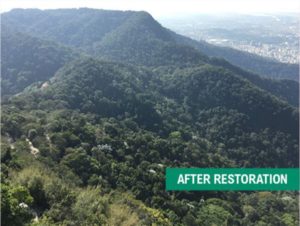Latin America and the Caribbean are home to some of the most biodiverse and productive ecosystems in the world. The region holds about half of the world’s tropical forests, and more than 30 percent of its mammals, reptiles, birds and amphibians. But despite the region’s ecological importance, more than 200 million hectares (494.2 million acres) of land has been completely deforested or degraded in the past century, an area the size of Mexico.
All hope is not lost. Case studies from WRI’s Restoration Diagnostic show that land restoration in Latin America and the Caribbean has been done before. Successes from Brazil, Panama and Costa Rica offer lessons on how to get degraded land back into productive use.
In Rio de Janeiro, Brazil, merely Tijuca National Park a protected area was not enough to completely restore economic and ecological benefits to the region. Severe water crises (similar to the ones now afflicting Brazil) led the Brazilian government to designate the area as a national park in 1961.
This allowed for the scaling up of restoration efforts, as the government realized vegetation’s benefits of modulating water flows, slowing runoff in the rainy season and capturing water during the dry season. Over time, the park has improved Rio’s water supply and air quality, added recreational opportunities and provided habitat for animals.
In Panama in the 1980s, the government began enforcing legislation that prohibited deforestation and mandated forest restoration in the region. In 2011, the Panama Canal Authority formally initiated a reforestation program meant to protect dry season water flows required for day-to-day operation of the canal and secure drinking water for 1.3 million people (about two-thirds of the national population).
The future of restoration in Latin America and the Caribbean is promising. A regional project called Initiative 20×20 has already secured commitments to restore 27.7 million hectares (68.5 million acres) of land by 2020—an area the size of the United Kingdom —with private impact investors earmarking $1.15 billion to support restoration projects.
See WRI article by Sarah Weber and Kathleen Buckingham + image credits.


